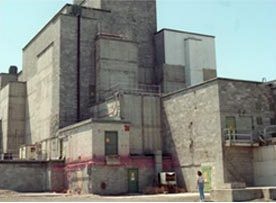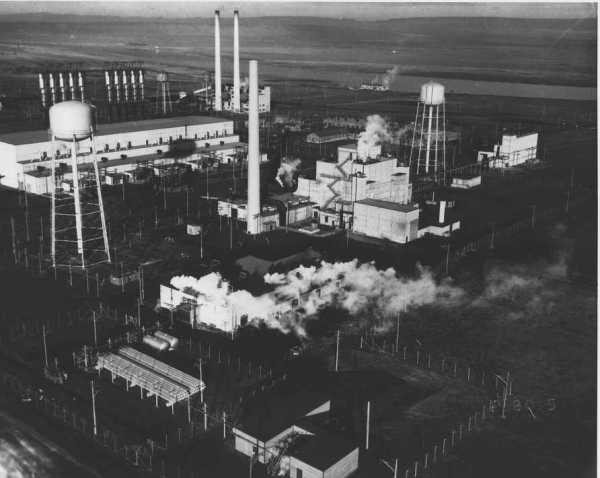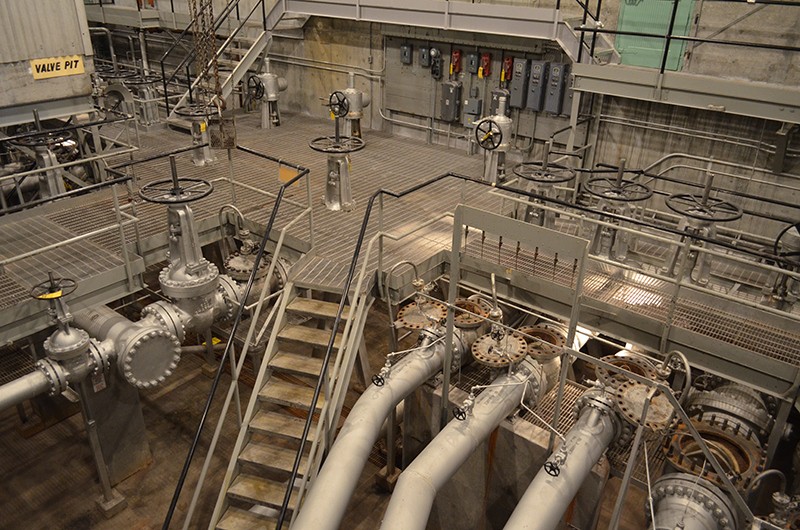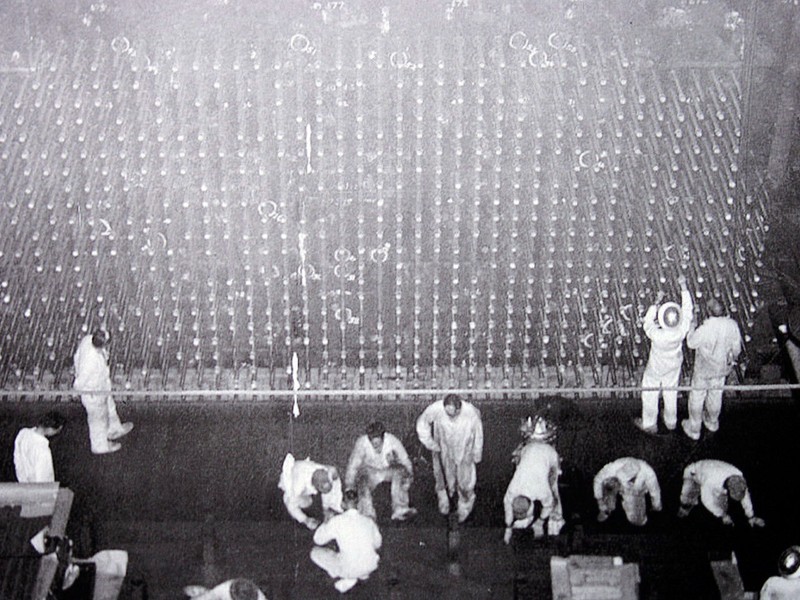B-Reactor
Introduction
Text-to-speech Audio
Images
The main reactor building today

An overview of the whole complex

The "valve pit" where the water used for cooling came through.

Men working at the reactor

Backstory and Context
Text-to-speech Audio
The B-Reactor was one of 3 reactors built about 6 miles apart from each other on the south bank of the Colombia River. Its design was based on experiments by Dr. Enrico Fermi and tests at the X-10 graphite reactor at Oak Ridge, TN. It was comprised of a 28 by 36-foot, 1,200 pound graphite pile that had 2,004 aluminum process tubes running horizontally along its entire length. These tubes contained 200 tons of uranium slugs the size of a role of quarters. Rather than using air as a coolant like the X-10 in Tennessee, water was pumped from the river at a rate of 75,000 gallons a minute and ran through the tubes around the slugs.
Construction of the B-Reactor began in October of 1943 and took only 11 months to complete. Like other reactors such as the Oak Ridge reactor, the need for labor turned the nearby town of Hansford into a sort of atomic boomtown with the population reaching 50,000 by the summer of 1944.
The reactor was initially shut down in 1946, but due to increasing tensions between the United States and the Soviet Union, it was restarted in 1948 to produce plutonium for the Cold War. Under instructions from the Atomic Energy Commission, the B-Reactor was shut down on February 12th, 1968.
Today, what remains of the reactor has been named a National Historic Landmark and as of 2009, it has been opened for public access with nearly 10,000 visitors each year.
